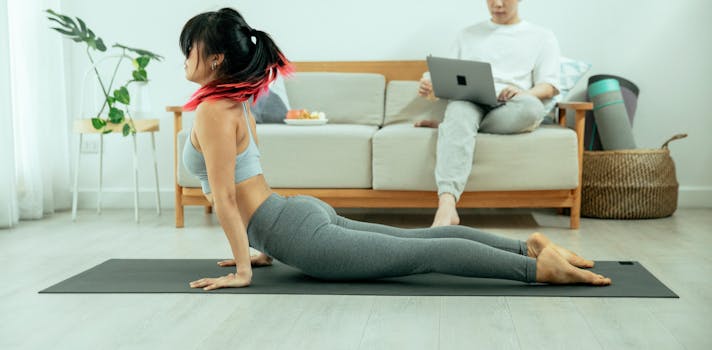
How to Create a Daily Yoga Routine That Fits Your Schedule
Takeaways: A well-structured daily yoga routine can enhance your wellbeing, reduce stress, and improve flexibility. By assessing your schedule, setting realistic goals, and being consistent, you can integrate yoga into your life effortlessly.
In today’s fast-paced world, finding time for self-care can feel challenging, especially when considering activities like yoga. However, a daily yoga routine can be tailored to fit into any schedule, no matter how busy you are. This article will guide you through creating a personalized yoga routine that enhances your physical and mental health while accommodating your lifestyle.
Understanding the Benefits of a Daily Yoga Practice

- Improved Flexibility: Regular practice helps increase your flexibility, reducing the risk of injury.
- Stress Relief: Yoga promotes relaxation and helps manage stress through breathing techniques and mindfulness.
- Enhanced Strength: Many yoga poses build strength, particularly in the core, arms, and legs.
- Mental Clarity: Yoga encourages focus and concentration, improving your productivity throughout the day.
- Better Posture: Practicing yoga can help improve your posture by strengthening the muscles that support your spine.
Step 1: Assess Your Schedule

- What time of day do you feel most energetic?
- How much time can you realistically dedicate to yoga each day?
- Are there specific days that are busier than others?
Once you have this information, you can determine the best time for your yoga practice, whether it be in the morning, during lunch breaks, or in the evening.
Step 2: Set Realistic Goals

- Start with Short Sessions: If you’re new to yoga or have a busy schedule, start with just 10-15 minutes a day.
- Gradually Increase Duration: As you become more comfortable, gradually increase your practice time to 30 minutes or more.
- Focus on Consistency: Aim to practice yoga at the same time every day to develop a habit.
Step 3: Choose Your Yoga Style

- Hatha Yoga: A great style for beginners, focusing on basic postures and breathing techniques.
- Vinyasa Yoga: A dynamic style that links breath with movement, often more fast-paced.
- Restorative Yoga: A gentle approach that focuses on relaxation and stretching.
- Power Yoga: A more intense workout that builds strength and endurance.
Choose a style that resonates with you and aligns with your goals. You can also mix and match styles throughout the week.
Step 4: Create Your Routine
Now that you’ve assessed your schedule, set goals, and chosen a style, it’s time to create your yoga routine. Here’s a simple structure to follow:
- Warm-Up (5 minutes): Start with gentle stretches and deep breathing to prepare your body.
- Asanas (20-25 minutes): Focus on a series of poses that target different areas of your body.
- Cool Down (5-10 minutes): End with relaxation poses or meditation to integrate your practice.
Step 5: Stay Accountable and Flexible

- Track Your Progress: Keep a journal to log your daily practice and reflect on your progress.
- Join a Community: Engage with a yoga community, either online or in-person, to share experiences and motivate each other.
- Be Flexible: Life can be unpredictable. If you miss a session, don’t be hard on yourself. Just get back to your routine the next day.
Conclusion






